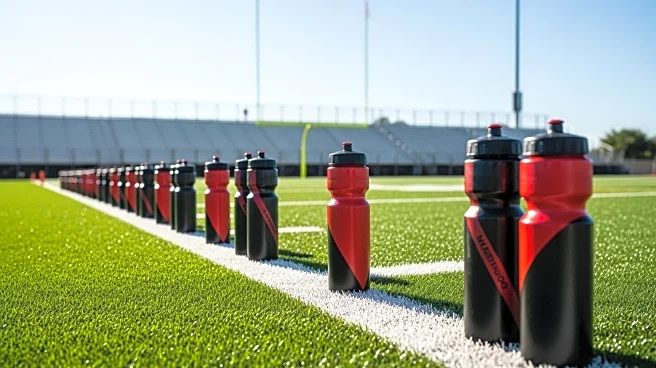What's Happening?
A football program in Georgia has adopted a new strategy to prevent heat-related injuries among student-athletes. The team at Heard County High School in Franklin, Georgia, led by head football coach and athletic director Shane Lasseter, has found that using water bottles instead of cups significantly improves hydration among players. This simple change is part of a broader effort to protect students from dehydration, heat exhaustion, and heat stroke during practice sessions in the Southern heat. The initiative highlights the importance of effective hydration methods in sports, especially in regions prone to high temperatures.
Why It's Important?
Heat-related illnesses are a serious concern for student-athletes, particularly in areas with high temperatures. By switching to water bottles, the Georgia football program is addressing a critical aspect of athlete safety. This approach not only enhances hydration but also sets a precedent for other sports programs facing similar challenges. The initiative could lead to widespread adoption of better hydration practices, potentially reducing the incidence of heat-related injuries in schools across the U.S. This proactive measure underscores the importance of adapting sports practices to environmental conditions to ensure the well-being of young athletes.
What's Next?
The success of Heard County High School's hydration strategy may encourage other schools and sports programs to evaluate and improve their own methods for preventing heat-related injuries. As awareness grows, there could be increased collaboration among educational institutions to share best practices and develop comprehensive safety protocols. Additionally, this initiative might prompt further research into effective hydration techniques and their impact on athlete performance and safety, potentially influencing policy changes at the school district or state level.
Beyond the Headlines
The shift to using water bottles instead of cups may seem minor, but it reflects a broader trend towards prioritizing student health and safety in sports. This change could inspire discussions about other simple yet effective measures that can be implemented to protect athletes from environmental hazards. It also highlights the role of coaches and athletic directors in driving safety innovations and fostering a culture of health awareness within sports programs.













